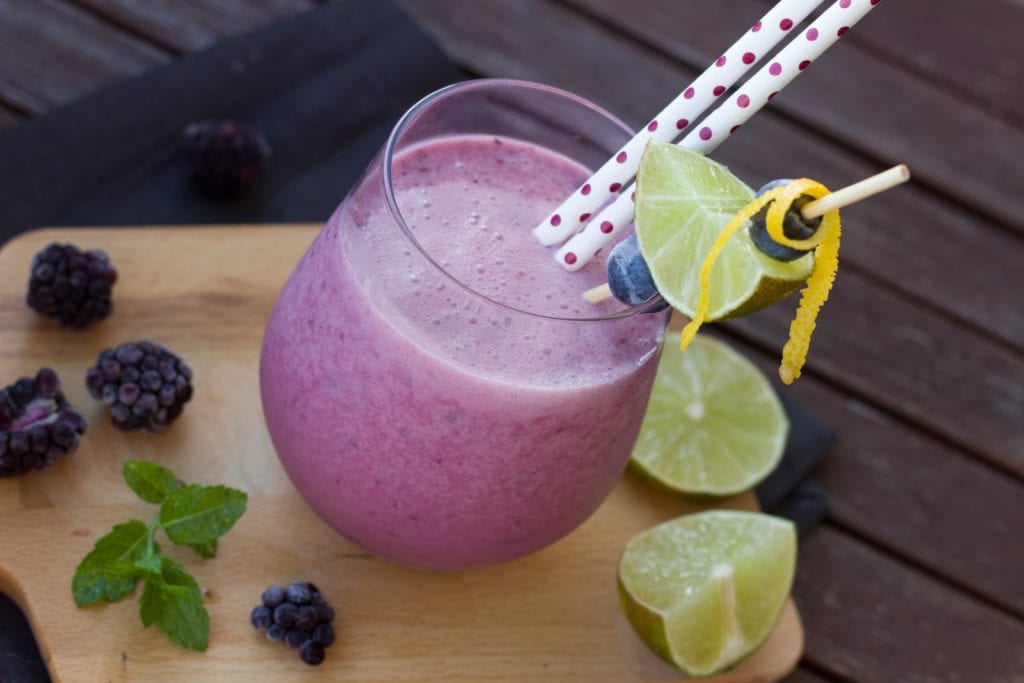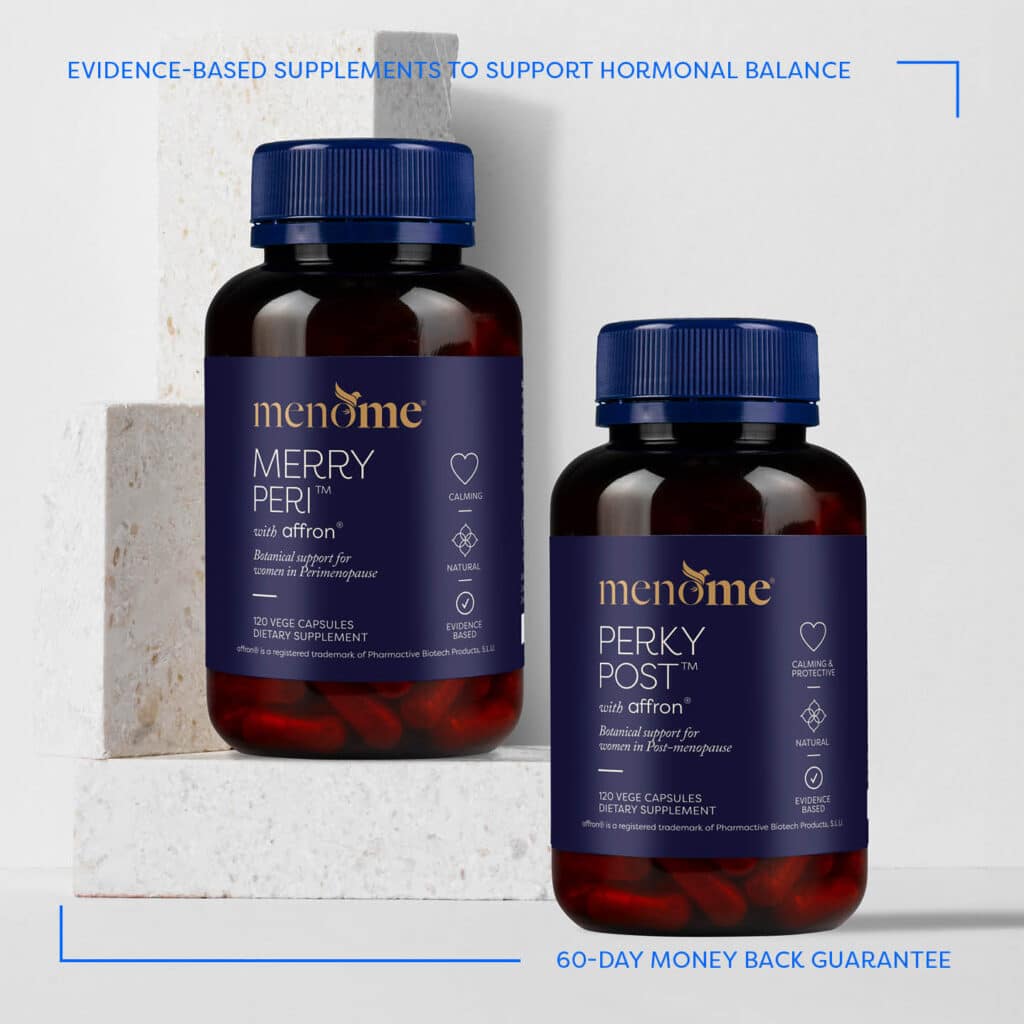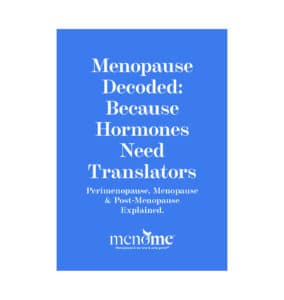Recipe: Delicious Icy Cold Blueberry Smoothie

Icy cold smoothie? It sounds good right now, doesn’t it? And it is.
Like all of our recipes, this smoothie is delicious as well as hormone loving and waistline pleasing.
Indeed, these things are prerequisites in our recipe library.
Plus it’s ridiculously easy!
And sometimes you simply need a touch of inspiration to change your food repertoire up.
Summertime has arrived down under and we’re totally not complaining about that.
However, it’s a time when you look for icy cold foods that fill you up and cool you down.
Particularly if you’re battling hot flushes and night sweats!
So why not try adding this smoothie to your day?
It’s versatile, you could use any type of berry that you like. Fresh or frozen. We’ve used frozen for the icy coolness but you could choose fresh and add ice cubes to the mix.
A note about protein powders:
Protein powders aid satiety and help keep blood sugar stable which is important for menopausal symptoms and weight management. And protein is essential to our bone health.
In addition, protein powders are an easy filler when you’re on the run or feeling hungry. They provide a great alternative to grabbing junk food that your body can’t process. And adding a load of ice cubes and berries to it creates that icy cold treat.
Hemp and pea proteins are great choices as is soy protein post-menopause (provided you’re not soy-intolerant). Always check the ingredient list to ensure the protein powder is low on fillers, preservatives and sugars.
NB: You will need to use a blender to break up the ice if that’s the effect you’re looking for.
Ingredients:
- 1 cup fresh or frozen blueberries. (You could also use other berries like blackberries, strawberries, raspberries, blackcurrants.)
- 12-15 ice cubes
- Water or milk of your choice. Coconut water’s great, so’s plain filtered water. Alternatively, use non-dairy milk like unsweetened almond, coconut, cashew or soy.
Optional
- 2 scoops of your favourite protein powder
- Some lime juice and/or mint leaves add a touch of pizzazz.
- You could add a frozen banana, mango or grapes – whatever you like.
- If you’re using the banana version try adding 1-2 tbsp cacao nib or cocoa powder.
Tip: Freezing bananas and grapes make for great, guilt-free ice blocks that won’t hurt your weight or your hormone balance!
Method:
- Put it all in your whizzer and blend.
- Easy peasy.
Tip: We used a George Foreman Mix & Go Pro which has an automatic smoothie blend facility.
Enjoy!
Main image: pixabay










